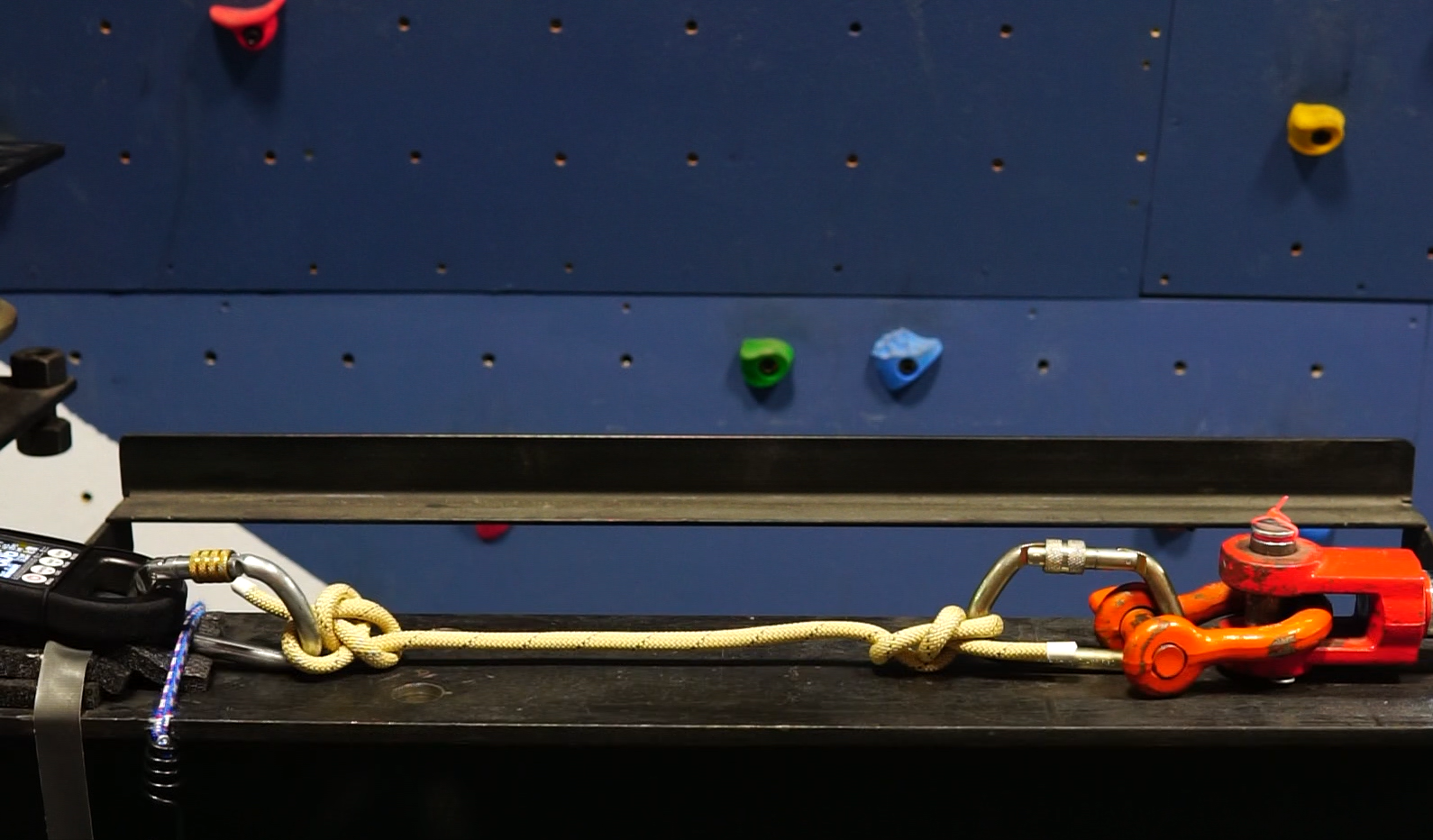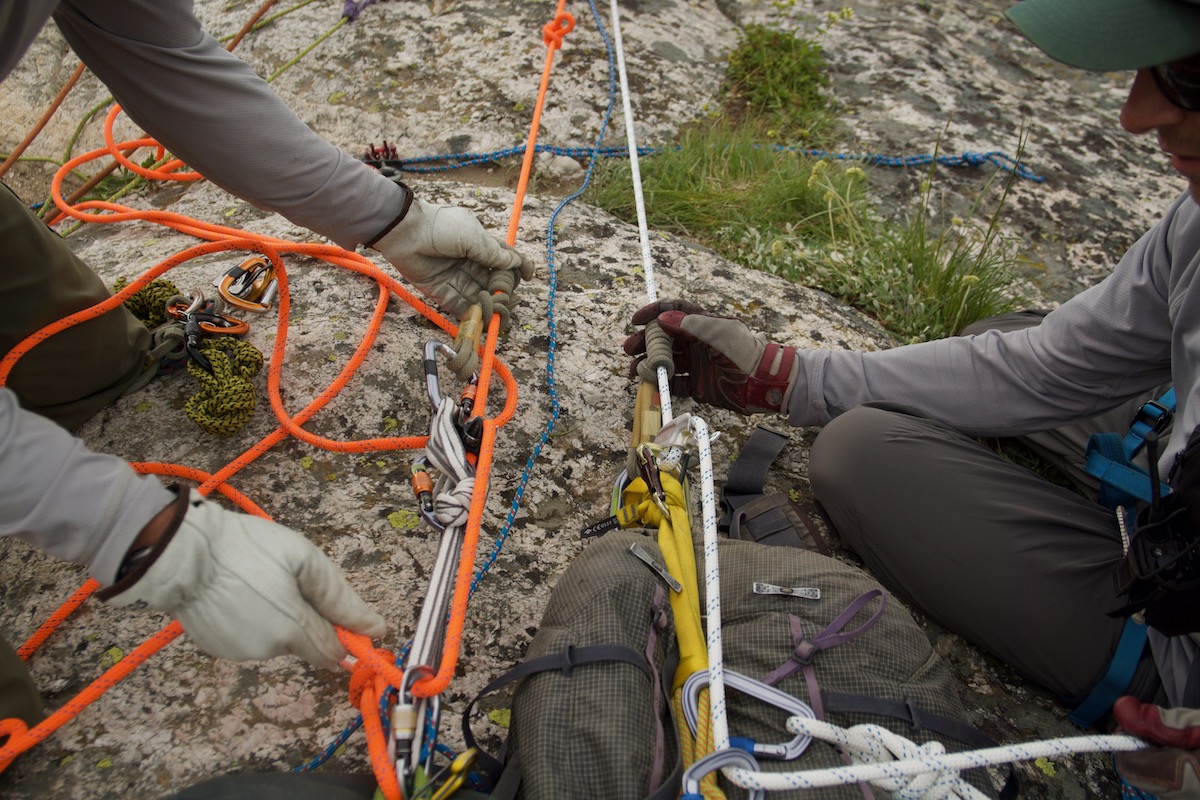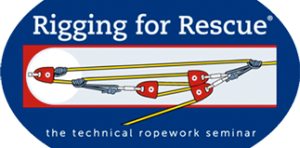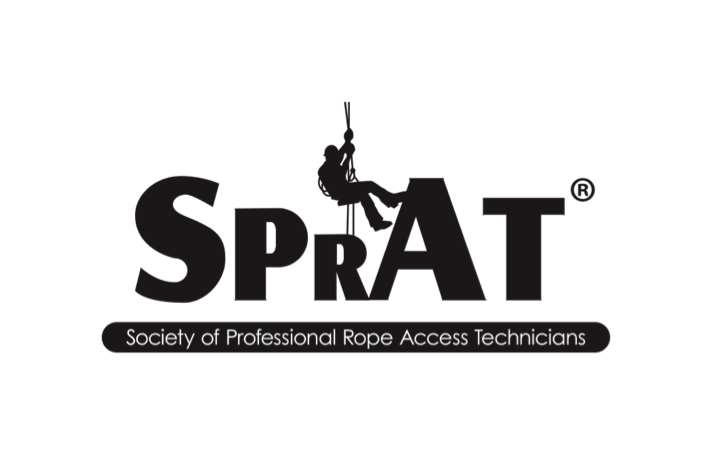Through considerable ongoing research and analysis, Rigging for Rescue’s developers have methodically reviewed, tested, and evaluated numerous ropework techniques – often exposing assumptions about ropework that were pure myth and folklore. This data-based approach has led to the introduction (and/or modification) of practical techniques that are gentle to the rope, patient, and rescuer-while maintaining high levels of safety.
Since 1986, Rigging for Rescue has continued to be at the forefront of research and testing on rope rescue systems. The leaders of Rigging for Rescue have been regular presenters at the International Technical Rescue Symposium – aka ITRS (formerly NATRS) – sharing research and testing on a variety of subjects ranging from rescue belays, to failure analysis of lanyards, to live-operator testing of Two Tensioned Rope Systems, just to name a few.
Included in this area of our website are recent research reports and video segments.

Aramid Rope Testing
Slow pull and drop testing of 9.5mm Sterling Tactical Response
Abstract: Rope rescue response organizations have traditionally utilized life safety lines constructed out of synthetic fibers such as Nylon and Polyester. Additionally, the lines are commonly manufactured using a kernmantle design that includes a load bearing core, protected by an outer sheath. Mountain rescue teams have typically favored 11mm diameter lines, whereas fire rescue and industrial rope rescue teams have commonly utilized 12.5mm diameter lines. However, as risk management perspectives have evolved so too have equipment choices utilized in rope rescue response. For example, it is an increasingly common approach for some mountain rescue teams to conduct their backcountry rope rescues with 9.5mm life safety lines as opposed to 11mm. The lighter weight and better compatibility with certain devices/systems is often cited as reasoning for utilizing a thinner life safety line. Many fire rescue teams have followed a similar approach by dropping diameter down to 11mm from 12.5mm.

DCTTRS – Critical Analysis
Two Tension or Not to Tension Much Ado About 4 Meters Abstract: Technical rope rescue has had a long, rich history of healthy debate and disagreement regarding device selection as well as techniques. A current debate that generates robust discussion involves the similarities and differences between Dual Capability Two Tensioned

VT Prusik for Rescue Belays
VT Prusik for Rescue Belays – Abstract Rope rescue teams typically operate redundant two-rope systems with inclusion of a failsafe mechanism for fall arrest. Examples include the MPD, 540° Rescue Belay, Petzl I’D, and Tandem Prusiks to name a few. Teams operating in remote environments with longer ingress/egress distances often

Mirrored Systems – Reflections From the Edge
ITRS, 2015 Abstract: “Mirrored Systems – Reflections from the Edge” Author: Mike Gibbs, Rigging for Rescue Background What is the primary objective in a technical rope rescue operation? It is to transport the subject from a place of predicament to a position of security – ideally, in a controlled




